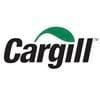Compensatory growth (CG) is the accelerated gain observed when cattle that have experienced a period of feed restriction are returned to an adequate plane of nutrition. This response, well documented in ruminant production systems, is reinforced by a series of metabolic, hormonal, and tissue-level adjustments that allow animals to recover lost growth potential partially or fully.
During restriction, animals reduce basal metabolic rate and shrink energetically demanding organs such as the gut and liver. When normal feeding resumes, maintenance energy costs remain temporarily reduced, which improves the partitioning of nutrients toward growth. At the same time, feed intake relative to body weight increases, further supporting rapid weight gain (Hornick et al., 2000). These combined effects explain why restricted cattle often display better feed conversion during the re-alimentation phase than continuously fed counterparts (Neel et al., 2007).

Endocrine signals coordinate much of the compensatory response. Restriction typically reduces circulating insulin and IGF-1, while growth hormone (GH) remains elevated, creating a state of GH resistance (Yambayamba et al., 2000). Refeeding restores insulin sensitivity, increases IGF-1, and raises thyroid activity, which accelerates protein synthesis and tissue accretion. These hormonal shifts favor lean tissue deposition in the initial stages of CG before fat stores are replenished.
Tissue-level dynamics
The sequence of tissue recovery during CG is not uniform. Muscle mass and visceral organs rebound rapidly, while adipose tissue restores more slowly (Choat et al., 2003; Hersom et al., 2004). As a result, cattle in early compensation often appear leaner with improved carcass dressing percentages. If the restriction is moderate and sufficient time is allowed, final carcass weight and composition converge with those of unrestricted animals (Hornick et al., 2000; Neel et al., 2007). However, severe, or prolonged restriction at early ages may reduce skeletal growth potential, leading to permanent changes in frame size and carcass maturity (Yambayamba & Price, 2002).
Compensatory growth also involves shifts at the molecular and digestive level. Studies of gene expression in the gastrointestinal tract and liver show that refeeding upregulates pathways associated with nutrient absorption, protein turnover, and energy metabolism (Keogh et al., 2015).
These adaptations enhance the capacity of previously restricted cattle to process and utilize nutrients efficiently during the recovery phase.
Practical implications
From a production standpoint, the physiology of CG offers opportunities to synchronize animal demand with seasonal feed supply. By imposing moderate feed restrictions during periods of low forage availability and exploiting the biological rebound during refeeding, producers can reduce total feed costs without compromising carcass traits or meat quality, if recovery time and diet quality are adequate (Keane & Drennan, 2008; Hornick et al., 2000).
In pasture systems, feed supply rises and falls with the seasons. Rather than fighting those cycles, producers can plan for them. Compensatory growth is the deliberate use of a short, moderate check-in growth during a feed-scarce period, followed by refeeding on higher-quality diets to trigger faster gains and better feed use. Recent work with Angus steers finished either on forage or on high-concentrate rations shows that this approach can trim feed costs without sacrificing carcass value or eating quality when cattle are harvested at comparable endpoints.
What research has found
Steers managed for lower backgrounding gains later grew faster and converted feed more efficiently during finishing than mates that had never been “held back.” They did, however, need additional days on feed to reach the same final body weight. When animals were harvested at a common weight, differences in whole-period feed efficiency, body composition, and carcass characteristics disappeared. Meat quality followed the same pattern: tenderness, flavor liking (how much they like the taste/aroma), and overall consumer acceptance were unaffected by the earlier growth strategy or by the finishing system itself.
While diet shaped the speed of gain, it did not alter meat flavor or tenderness. Feedlot cattle reached targets sooner, posted higher carcass weights, and showed better feed conversion than forage-finished cattle, yet objective and sensory meat-quality measurements were similar between systems. A practical reading of these results is that compensatory growth improves the economics of the finishing phase, while careful choice of endpoint keeps product quality consistent.
The core of the strategy is timing. Apply a controlled, short-term restriction in periods when pasture is costly or limited, then provide ad libitum access to high-quality feed as conditions improve. Expect the strongest rebound in the first one to two months of refeeding and monitor intake relative to body weight, as it typically rises during this phase. Decide early whether the plant or the buyer rewards a common age or a common weight at harvest; if weight uniformity is critical, budget extra days for previously restricted cattle. Throughout, track average daily gain, dry-matter intake, feed conversion, and the usual carcass metrics so you can verify the expected efficiency bump and confirm that carcass and meat-quality targets are met.
What Forage Works Best for Compensatory Growth?
The effectiveness of compensatory growth depends not only on the restriction period but also on the nutritional concentration of forage during refeeding. After restriction, cattle respond with higher intake and improved efficiency, but this can only be fully expressed when diets supply adequate digestible energy, protein, and minerals.
High-quality forages such as early spring pasture, alfalfa silage, or legume–grass mixtures typically provide 2.6 to 3.3 Mcal of metabolizable energy (ME) per kg of dry matter and 16–22% crude protein, with moderate neutral detergent fiber (NDF). These values support rapid muscle accretion before fat deposition dominates, maximizing carcass weight and value (Keady et al., 2021; Clariget et al., 2024).
In contrast, low-quality roughages — mature grasses, crop residues, or poorly conserved hay — often fall below 1.9 to 2.1 Mcal ME/kg DM and 8–10% CP, while fiber (NDF > 60%) limits intake. Even with increased appetite, cattle cannot consume enough nutrients to fuel efficient lean growth, dampening the compensatory response (Silva et al., 2020).
Practical strategies to maximize nutrient concentration include:
• Grazing or harvesting forage at early to mid-vegetative stage when digestibility and protein are highest.
• Incorporating legumes such as alfalfa or clover to lift CP and energy density in the sward.
• Conserving silage or haylage using rapid wilting and airtight storage to minimize nutrient losses.
• Providing strategic supplementation with protein meals, high-energy concentrates, or mineral blocks when forage nutrient content is below the above thresholds.
Aligning nutrient concentration with the animal’s elevated metabolic capacity during realimentation ensures that compensatory growth delivers faster gains, improved feed conversion, and carcasses of market specification, often comparable to feedlot performance but with lower feed costs (Clariget et al., 2024).
Limits, and the bottom line
The biological response hinges on moderation and recovery. Severe or prolonged underfeeding can depress lifetime performance and welfare, while modest, time-bounded restriction followed by nutritionally adequate refeeding yields the desired rebound. Responses also vary with age at restriction, breed, pasture quality, and finishing intensity, so local validation is essential.
In short, compensatory growth is not a shortcut; it is a scheduling tool. Used deliberately, it aligns animal demand with the grass curve, improves finishing-phase feed efficiency, and delivers carcasses and eating quality that meet market specifications. It is a practical way for pasture-based beef systems to turn seasonal variability into an advantage rather than a liability.













